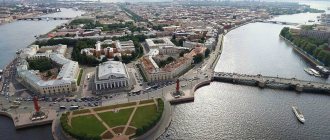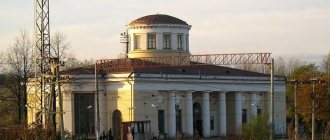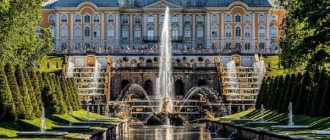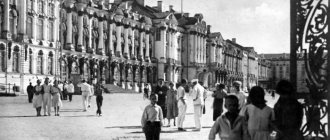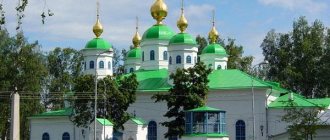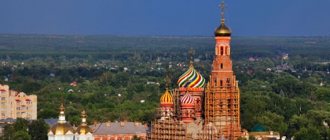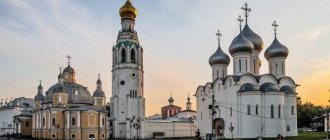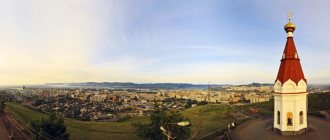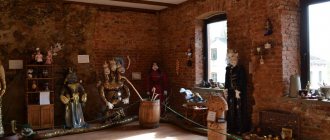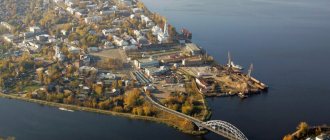St. Petersburg, located on islands, is intertwined with rivers and canals, and the wide, navigable Neva carries its waters to the Gulf of Finland. That is why there are a huge number of bridges in the city, including drawbridges, each of which is special and fraught with history.
St. Petersburg is a city with active navigation, and it has always been so, so the need to build drawbridges was established historically. The figure indicating the number of bridges in St. Petersburg is impressive: there are 342 city bridges, of which 21 are drawbridges .
Palace Bridge
The Palace Bridge connects the city center and Vasilyevsky Island. Its cast-iron spans soaring into the sky against the backdrop of the Peter and Paul Cathedral have become one of the unspoken symbols of St. Petersburg. A bridge was built to make it more convenient to get to the stock exchange and the trading port. The Society of Civil Engineers in 1901 set a difficult task: “to create a work of art worthy of the surrounding environment,” that is, the Admiralty, the Winter Palace, and the Exchange building. In total, 55 sketches were reviewed, and they were built according to the design of the famous St. Petersburg engineer Andrzej Pshenitsky. The first tests of the grandiose structure took place in 1916: 34 cars drove onto the bridge, each carrying a load of 600 pounds. It was possible to complete the architectural appearance of the bridge only in 1939, when it was supplemented with cast-iron gratings by the architect Lev Nosnov, but the large lampposts decorated with eagles he had planned never appeared on the bridge supports.
brief information
The numbers are impressive: within the city there are 342 bridges, of which 5 are in Kronstadt, 54 in Tsarskoe Selo, 51 in Peterhof, 16 in Pavlovsk and 7 in Oranienbaum.
The total length of these bridges, if we connected them, would be about 16 kilometers.
Many of them are real works of art. Opening the bridges at dawn makes them even more impressive.
Each bridge has its own decorative motifs and artistic details, as well as its own functionality, its own history and its own legends.
This article talks about the drawbridges of St. Petersburg, as well as opening schedules and recommendations for viewing them. It also points out pedestrian bridges that you shouldn't miss.
Egyptian Bridge
The stone crossing over the Fontanka River between Pokrovsky and Bezymyanny islands is guarded by majestic sphinxes on granite pedestals - the only surviving decorative elements of the once magnificently decorated bridge. Portals covered with gilded ornaments, cast-iron railings designed in the “Egyptian manner,” a cornice with the image of the god Ra in the form of a winged sun—this is how the suspension bridge appeared when it opened in 1826. Almost 80 years later, it collapsed under a squadron of guards cavalry, towards which 11 sleighs with drivers were moving - the chains could not stand it. Rumors immediately spread around the city that the reason for everything was the phrase thrown out in the hearts of a local resident: “May you all fail!” One way or another, after the tragedy a temporary bridge was opened, and only half a century later a new, capital bridge was rebuilt.
Excursions
Tourists and guests of the city have the opportunity to see the construction of bridges on their own or with a tour; there are as many of them as you like and for every taste.
For adults
One of these romantic river walks takes place on the closed and open decks of the motor ship "Moscow" . The duration of the walk is 1 hour 30 minutes. Participants of the excursion group will witness the construction of bridges and listen to a brief description of each of them. Place of departure and arrival – Palace Square. Cost – 780 rubles.
There are combined sightseeing night tours of bridge raising . The journey begins on a tourist bus, continues with a boat trip and ends with a return trip by bus. The duration of this trip is 6 hours, and the cost is 1000-1400 rubles.
Every year at school graduation, approximately at the end of June, the city holds the Scarlet Sails holiday . Anyone has the opportunity to be part of the celebration, since the bus sightseeing tour of the city includes a stop at the embankment in order to look at the treasured ship with elegant scarlet sails sailing under the bridges and take great photos. Tourists will be treated to a grandiose pyrotechnic show and the most beautiful places in St. Petersburg. Tickets for such an excursion can be purchased for 600-1500 rubles.
In the afternoon, from the Admiralty Embankment, the motor ship “Astra” sets off on an hour and a half journey to the Gulf of Finland past the historical part of the city. Hungry travelers can order lunch and snacks on board. The cost of such a walk is 500-800 rubles.
A dinner cruise on the ships “Astra” and “Koryushka” with live musical accompaniment will leave a pleasant impression. To the sounds of jazz and blues, ship passengers will see as many as 7 bridges and the lights of the cultural city . The seats are located on a closed deck; if desired, everyone has the opportunity to go up to the open one. For complete romance, guests can dine in a cozy atmosphere. Cost – 850 rubles.
Another interesting and educational excursion program includes a river walk along the canals, and then an exit to the Neva . Travelers will appreciate the stunning views and feel the contrast between the calm waters of the Fontanka, Moika and the wide and fast Neva. In St. Petersburg, it is possible to book an individual excursion on the water by boat. For an hour, tourists will be driven along the most interesting routes.
On a tour of the northern islands of the Neva delta, the guide will tell you about the emergence of the city, its history, and will also reveal the secret of why the cultural capital is called “Venice of the North.” The cost of visiting is 500-800 rubles.
Children's
Especially for children, it is suggested to visit the Children's Ship . This is a combination of business and pleasure: viewing historical monuments and attractions encountered along the way, and the entertainment program of the animators. On certain days, performances are held on deck. Cost – 600 rubles for everyone. Also, during another river trip, children will be able to see a circus performance and have a good laugh right on board the ship.
Youth entertainment
For young people, there is a 4-hour cruise on the ship “Purga” with a disco and drinks on board. Dancing to lively music and a great mood are guaranteed. Price – 1500 rubles. Reservation of a seat is paid separately.
Excursions with viewing of drawbridges will become a vivid memory of St. Petersburg. Night embankments, illuminated by lights, canals and the Neva set you in a romantic and calm mood and will forever remain in your memory.
Anichkov Bridge
The first bridge “beyond the Bolshaya Neva on the Fontannaya River” was built by order of Peter I by the engineering battalion of Mikhail Anichkov and named after him. Anichkov also named a wooden bridge built in 1716, a stone one with turrets, which replaced its predecessor in 1785, and a modern one, with images of seahorses and mermaids. Anichkov was the name given to a wooden bridge built 300 years ago, a stone one with turrets, which replaced its predecessor in 1785, and a modern one, with images of seahorses and mermaids. The cast-iron railings, made according to a drawing by the German architect Karl Schinkel, echoed the ornament of the railings of the Palace Bridge in Berlin. The famous “Taming of the Horse” statues by Peter Klodt decorated the bridge in 1841: two sculptural groups were made of bronze, and two were made of painted plaster, since Nicholas I sent two of the four bronze statues directly after casting to Berlin as a gift to the Prussian king Friedrich Wilhelm IV. Another pair of “tamers” also did not reach their destination: by imperial decree they were sent to Naples. The Anichkov Bridge received a complete bronze set of sculptures only in 1851.
Tuchkov
Crosses the Malaya Neva from the Petrograd side, between the Yubileiny sports complex and the Petrovsky stadium, to the 1st line of Vasilievsky Island. The modern three-span steel Tuchkov Bridge on granite-reinforced concrete piers repeats the Palace Bridge in design: it also has a symmetrically opening central span and has no obvious ornamentation.
Tuchkov Bridge, view from the embankment
Lions Bridge
One of the three surviving pedestrian chain - or suspension - bridges in St. Petersburg. The crossing of the Griboyedov Canal is held by cast-iron lions made by Pavel Sokolov. He was a famous sculptor, “master of carved art” at the Admiralty and the author of the famous Tsarskoye Selo fountain “Girl with a Jug.” The lions were originally going to be minted from copper sheets, but in the end they were cast from cast iron and painted to resemble marble. The crossing project was developed by one of the leading bridge builders of that time, engineer Wilhelm von Tretter. The bridge connecting the Kazan and Spassky islands was opened in the summer of 1826, and on the very first day 2,700 city residents crossed it.
The sibling of the “Four Lions Bridge”, its smaller copy, is located in Berlin’s Tiergarten park. Löwenbrücke, built 12 years after the original, became the first suspension bridge in the German capital.
Lomonosovsky
Named after the great Russian polymath Mikhail Lomonosov, this beautiful stone bridge crosses the Fontanka River approximately 300m south of Nevsky Prospekt.
Fontanka, Lomonosovsky Bridge
The 57.1 meter long bridge consists of two wide arched side spans and a shorter central span, which was originally made of wood but was replaced with steel in 1913. Although the Lomonosov Bridge no longer rises, it retains four charming Doric pavilions that once housed the draw mechanism.
Bank Bridge
“A winged lion sits with a winged lion,” wrote the Leningrad poet and literary critic Dmitry Bobyshev in the 20th century about the bridge built a century earlier. According to legend, winged lions are formidable creatures that protect gold, and it is symbolic that these mythical animals are located near the building of the Assignation Bank, the current State Economic University of St. Petersburg. The sculptures of winged lions are the work of Pavel Sokolov. The statues were cast at the Alexander Iron Foundry, the wings were minted from copper and covered with gold leaf. Later, winged lions appeared on the emblem of the Krupskaya factory. The Bank Bridge is the narrowest bridge in the Northern capital, only 1 meter 80 centimeters wide, and is one of the favorites among tourists. They believe that if you leave a coin at the lion's paw, you can improve your financial situation.
Seven years old
A magical place called Semimostye is located on the embankment of the Kryukov Canal, not far from the St. Nicholas Naval Cathedral. From this point you can see seven St. Petersburg bridges at once - this is what makes it unique. You can’t collect them in one photo, there is no such angle, you need to actively look around.
Hermitage Bridge
One of the oldest bridges in St. Petersburg was built across the Winter Canal in the 60s of the 18th century on the site of the first wooden drawbridge. Over the years it was called Zimnedvortsov and Verkhneberezhny. When connecting the buildings of the Old Hermitage and the Hermitage Theater with a passage-gallery over the water, the bridge was harmoniously complemented by an arch.
The romantic appearance of this bridge and the tragic story of Pushkin’s “Queen of Spades” inspired Pyotr Ilyich Tchaikovsky to create the opera of the same name. In the third act, Lisa with the words “He died, died, and with him so did I!” - throws itself into the water of the canal from the Hermitage Bridge, and maybe that’s why the bridge received another, unofficial, name “Lisa’s Bridge”.
Bolsheokhtinsky
Connects the Okhtinsky district with the center and is one of the most impressive bridges in St. Petersburg. Instantly recognizable by the soaring arched beams of the two side bays and the four granite Norman towers that mark the corners of the small central bay. Equipped with an original mechanism that allows you to lift the narrow (14.6 meters) central span in just 30 seconds.
Bolsheokhtinsky Bridge at night
Trinity Bridge
The Trinity Bridge was built for the 200th anniversary of St. Petersburg - work on its construction lasted almost 20 years.
In 1882, an international competition for designs for a permanent crossing was announced to replace the longest floating bridge in St. Petersburg, more than 500 meters long. The first prize was awarded to Alexandre Gustave Eiffel, creator of the famous Parisian tower. But the Eiffel Bridge was not built, since his compatriots proposed a project that significantly reduced metal consumption. The company finalized the final version of the drawings together with the St. Petersburg Academy of Arts represented by architects Leonty Benois, Alexander Pomerantsev and Robert Goedicke. The first ceremonial opening of the Trinity Bridge was carried out by Nicholas II, personally pressing the button of the mechanism.
Over the years, the bridge was called the Kirov Bridge and the Equality Bridge. According to legend, the famous ace Valery Chkalov flew under it. It is not known for certain whether such an episode occurred in the life of the heroic pilot, but the pilot Evgeny Borisenko did fly under this bridge in a seaplane in 1940 while filming the film “Valery Chkalov.”
Divorce Schedule
| Bridge name | Divorce time |
| Alexander Nevsky | 2:20 – 5:10 |
| Exchange | 2:00 – 2:55, 3:35 – 4:55 |
| Blagoveshchensky | 1:25 – 2:45, 3:10 – 5:00 |
| Bolsheokhtinsky | 2:00 – 5:00 |
| Volodarsky | 2:00 – 3:45, 4:15 – 5:45 |
| Palace | 1:10 – 2:50, 3:10 – 4:55 |
| Casting | 1:40 – 4:45 |
| Trinity | 1:20 – 4:50 |
| Tuchkov | 2:00 – 2:55, 3:35 – 4:55 |
Distribution is carried out according to schedule during the navigation period: from April to November.
Description
The cable-stayed bridge in St. Petersburg is the largest structure across the main water artery of the city, as well as the largest crossing in terms of the length of the navigable span. It is, in fact, two identical bridges located side by side, each of which allows traffic to move in opposite directions along 4 lanes.
Autonomous bridges have some differences in height: the Southern one is slightly higher than the Northern one. In addition to 4 car lanes in each direction, the spans have sidewalks for the movement of technical personnel (there are no pedestrian sidewalks here).
The design of 2 independent bridges made it possible to carry out the construction of the facility in 2 stages: the opening of the first took place in 2004, the second - 3 years later.
Characteristics
The cable-stayed bridge has the following dimensions:
| Design name | Structure size, m |
| Full bridge length | 2824 |
| Length of cable-stayed part | 994 |
| The size of the navigable span (above the river) | 382 |
| The height of the structure above the water | 30 |
| Pylon height | 126,5 |
Design
The general designer of the structure is the Stroyproekt Institute; the cable-stayed part was designed at the St. Petersburg Giprostroymost Institute. Several Russian Bridge Teams took part in the construction of the structure. During the design and construction of facilities, due to many objective reasons, special design solutions were used.
The location for the installation of the crossing over the Neva was dictated by the construction of the Ring Road route; it was located on a section of the river with difficult navigation, called the Crooked Knee. It was this factor that dictated the design of the bridge.
Two widely spaced pylons do not impede the passage of ships along the river, and the steel cables attached to them reliably hold the spans over the river. The monumental suspension bridge externally gives the impression of a light and openwork structure.
The St. Petersburg Ring Road has 8 lanes, 4 in each direction, which dictated the width of the bridge. To speed up the pace of construction of the facility, it was erected in 2 stages - first one bridge was put into operation, and then the second.
The construction of two such large objects close to each other is a very difficult task from an aerodynamic point of view. In this matter, the world experience is also not rich.
The existence of the cable-stayed bridge also made adjustments to the dimensions of ships arriving in St. Petersburg.
The under-bridge clearance of 40 m, which existed for a long time and was mandatory for the Neva for the passage of large ships under the lowest bridges in the city when they are open (Volodarsky, Kuzminsky and others), was lowered for the Bolshoi Obukhovsky Bridge by 10 m. Now ships no taller enter the Bolshaya Neva 30 m.
Pylons are the main supporting structures made of metal. They have a height of 126.5 m, exceeding in this value all the buildings of the Northern capital. The construction of pylons required the builders to have certain professional knowledge (metal pylons are erected very rarely in global and domestic bridge construction) and the acquisition of special equipment.
This construction material was chosen due to the short time frame allocated for the construction of the bridge. Traditional reinforced concrete pylons, which have a high damping capacity and lower cost, increased the construction time of the facility and required concreting in winter, which was rejected by the designers.
The bridge beam is also made of metal for the same reasons. Typically, for spans up to 600 m, it is more economical to use reinforced concrete, but in this case, for a span of 382 m, an all-metal beam was used. And the very size of the central span was established for the same reasons.
If the pylons were installed not on bulk peninsulas, but on the banks of the river, the distance between them would be 500 m, which would significantly extend the construction period.
The estimated operating time of the cable stays is one century. They are divided according to manufacturing technology into 2 types: one-piece ready-made and those created on site during installation. In St. Petersburg, also due to the timing of completion of the work, the second method was used. Cable cables manufactured at the factory require lengthy design work, namely, detailed, precise design work.
Cable cable is a connection of several 7-wire cables (strands), which are placed in a plastic pipe. Calculations of the load on the bridge determine the number of strands; their currently used range is from 13 to 91 pieces.
On the Bolshoy Obukhovsky Bridge, 14 pairs of cables are attached to each pylon in each direction. Experts say that the total length of the strands embedded in the bridge cables exceeds the distance between Moscow and St. Petersburg, that is, reaches almost 900 km.
In the world, cable-stayed cables are attached to pylons in three ways, called:
- “Bundle” (the cables are attached at one point of the pylon and distributed along the stiffening beam at a certain distance);
- “Harp” (shrouds are attached to different points of the pylon and run parallel to the stiffening beam);
- “Fan” (the cables are attached as in the previous case, but they go to the beam non-parallel).
The choice of the method of attaching the cables, as well as the design of the bridge itself, is made by the designer in accordance with the results of studies of all proposed projects, as well as the architectural preferences of the authors. The cable stays of the Bolshoy Obukhovsky Bridge form two giant fans over the river, making the impressive structure of the crossing externally light and elegant.
All materials for the St. Petersburg bridge are Russian-made, except for the metal for the cables. It was purchased in Austria, and French colleagues provided assistance to bridge builders in installing them on structures.
Economic significance
The significance of this bridge for the city’s transport system is enormous: with the commissioning of the second stage of the crossing, the load on the ring road has significantly decreased. Uninterrupted communication between parts of the city was ensured, regardless of the time of year.
Its estimated capacity is about 150 thousand cars/day. However, today there are recorded days when more than 200 thousand cars crossed the Neva across the bridge.
